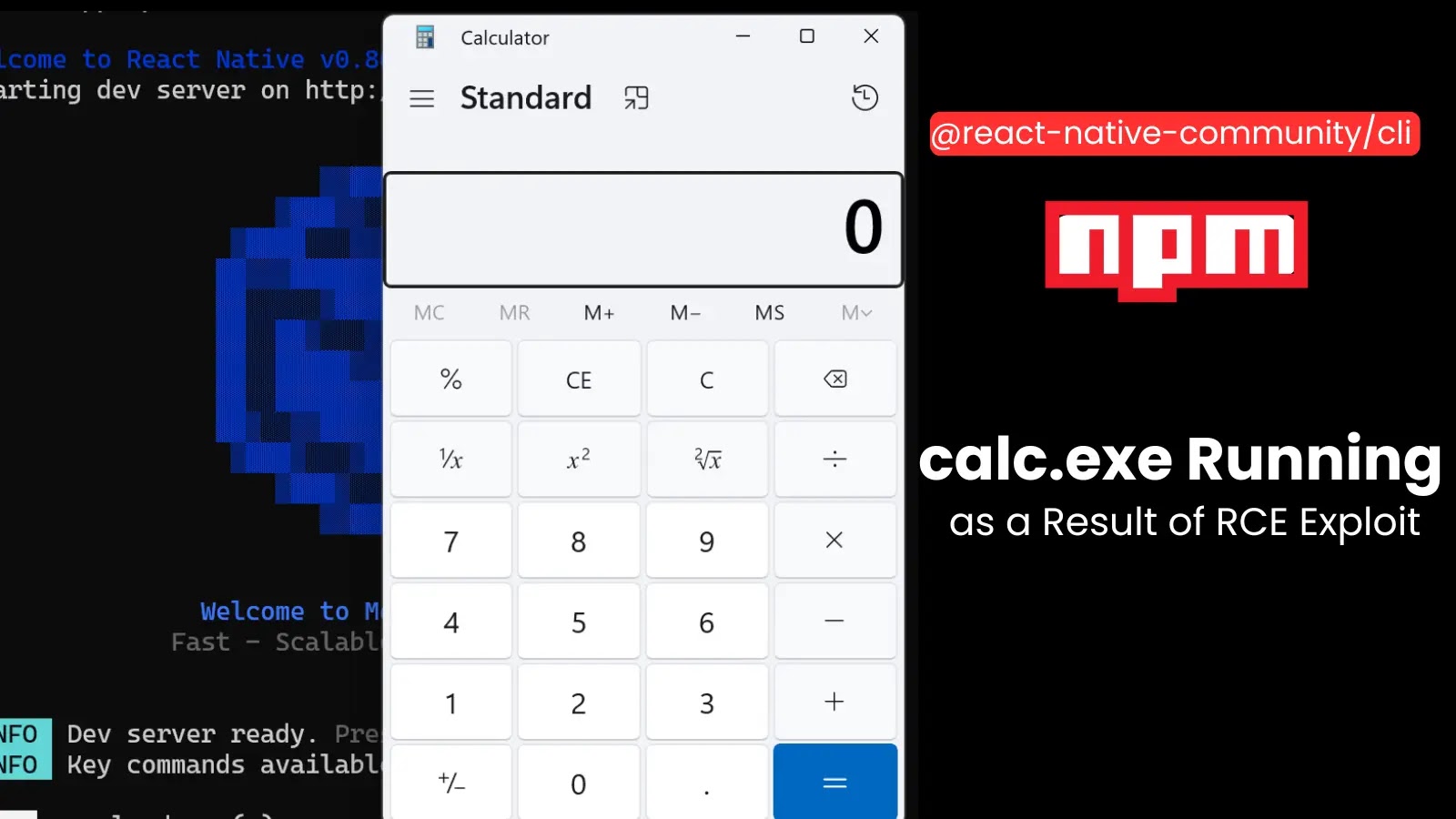
Critical RCE Vulnerability in Popular React Native NPM Package Exposes Developers to Attacks
l
In the fast-paced realm of mobile application development, React Native stands as a cornerstone, empowering developers to build cross-platform apps with remarkable efficiency. Yet, even the most ubiquitous tools can harbor critical vulnerabilities, posing significant risks to the developer ecosystem. A recent discovery spotlights just such a threat: a severe Remote Code Execution (RCE) vulnerability impacting a widely used React Native NPM package.
Critical RCE Vulnerability Strikes React Native CLI
A high-severity Remote Code Execution (RCE) vulnerability, officially tracked as CVE-2025-11953, has been identified within the @react-native-community/cli NPM package. This particular package is not just any component; it forms the backbone of the command-line interface for React Native, a JavaScript framework championed by developers for its cross-platform mobile app development capabilities. The immense popularity of React Native translates directly into the widespread adoption of this package, evidenced by its impressive nearly 2 million weekly downloads.
The implications of this vulnerability are stark. With a staggering CVSS score of 9.8, it signals an immediate and severe threat. This score is attributed to several critical factors:
- Network Accessibility: The vulnerability can be exploited remotely over a network.
- Low Complexity: Exploiting this RCE does not require highly sophisticated techniques or intricate preconditions.
- Potential for Data Compromise: Successful exploitation could lead to arbitrary code execution, granting attackers full control over affected systems.
The ability of an attacker to execute arbitrary code on a developer’s machine could lead to catastrophic outcomes, ranging from intellectual property theft and source code manipulation to the complete compromise of development environments and build systems.
Understanding the Impact of CVE-2025-11953
The @react-native-community/cli package is integral to the React Native development workflow. Developers rely on it for tasks such as project initialization, linking native modules, running applications on emulators or devices, and managing various aspects of their React Native projects. An RCE vulnerability in such a foundational tool presents a direct attack vector against developers themselves.
Consider the potential scenarios following a successful exploitation:
- Supply Chain Attacks: Compromised developer machines could be used to inject malicious code into legitimate applications, creating a devastating supply chain attack that affects end-users.
- Sensitive Data Theft: Access to a developer’s environment means access to source code, API keys, credentials, and other proprietary information.
- Lateral Movement: An attacker could pivot from a compromised development machine to other systems within the organization’s network.
The inherent trust placed in development tools makes vulnerabilities like CVE-2025-11953 particularly dangerous. Developers, often operating under tight deadlines, might unknowingly execute malicious commands or install compromised dependencies, inadvertently opening the door to attackers.
Remediation Actions for React Native Developers
Immediate action is paramount to mitigate the risks posed by CVE-2025-11953. Developers and organizations leveraging React Native must prioritize these steps:
- Update the Affected Package Immediately: The most crucial step is to update
@react-native-community/clito the patched version as soon as it becomes available. Always check the official NPM registry page for the latest secure releases. - Audit Project Dependencies: Conduct a thorough audit of all project dependencies to ensure no other vulnerable packages are present. Tools like Snyk or OWASP Dependency-Check can automate this process.
- Implement Least Privilege: Ensure that development environments and individual user accounts operate with the principle of least privilege, limiting potential damage in case of a compromise.
- Use Secure Development Practices: Reinforce secure coding guidelines and development practices across teams. This includes validating all external inputs, scrutinizing third-party libraries, and avoiding the execution of arbitrary scripts from untrusted sources.
- Isolate Development Environments: Where feasible, isolate development environments from production networks and other critical infrastructure to contain potential breaches.
Recommended Tools for Vigilance
Staying ahead of vulnerabilities requires a proactive approach. The following tools can assist in detecting, scanning, and mitigating risks associated with NPM packages and development environments:
| Tool Name | Purpose | Link |
|---|---|---|
| Snyk | Identifies vulnerabilities in open-source dependencies, monitors for new threats, and helps remediate them. | https://snyk.io/ |
| OWASP Dependency-Check | Detects publicly disclosed vulnerabilities in project dependencies. | https://owasp.org/www-project-dependency-check/ |
| npm audit | Built-in command to identify vulnerabilities in your project’s dependencies directly using the npm registry. | https://docs.npmjs.com/cli/v9/commands/npm-audit |
| Node Security Platform (Retired, but principles live on in tools like Snyk) | Previously a dedicated service for Node.js vulnerability scanning; its capabilities are now integrated into modern security tools. | (Functionality absorbed by others) |
Protecting the Developer Ecosystem
The discovery of CVE-2025-11953 serves as a potent reminder that no software, regardless of its popularity or utility, is immune to vulnerabilities. For the vast community of React Native developers, this RCE threat underscores the critical importance of maintaining vigilant security practices, prioritizing timely updates, and incorporating robust vulnerability scanning into the continuous integration/continuous deployment (CI/CD) pipelines.
Staying informed about security advisories, particularly for widely used dependencies, is not just a best practice—it’s a fundamental requirement for safeguarding development efforts and, by extension, the applications that millions of users rely upon daily.





